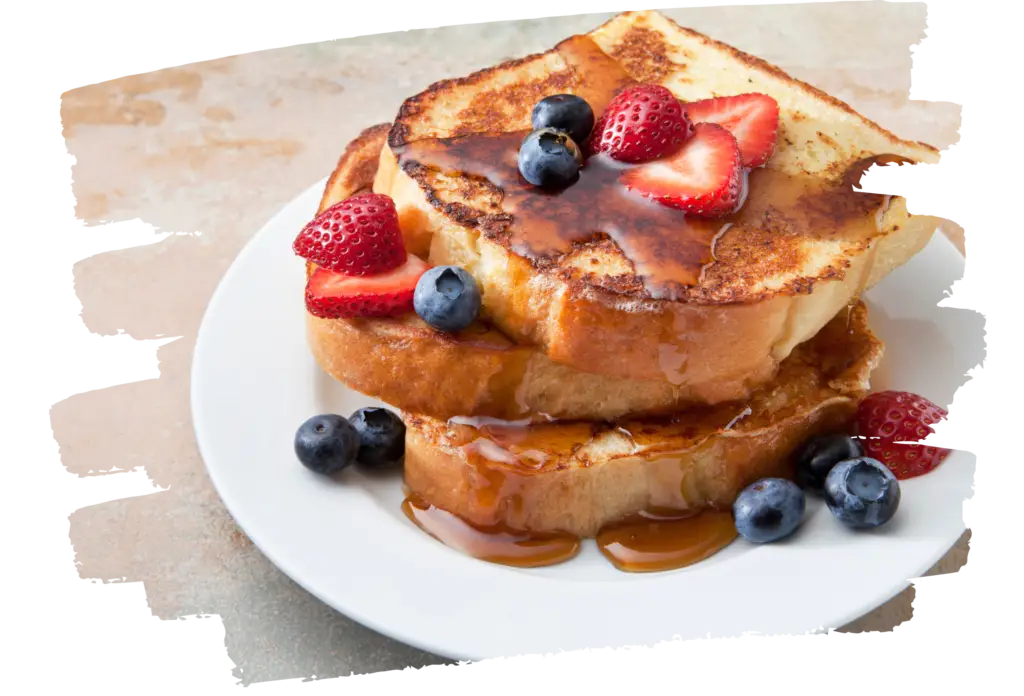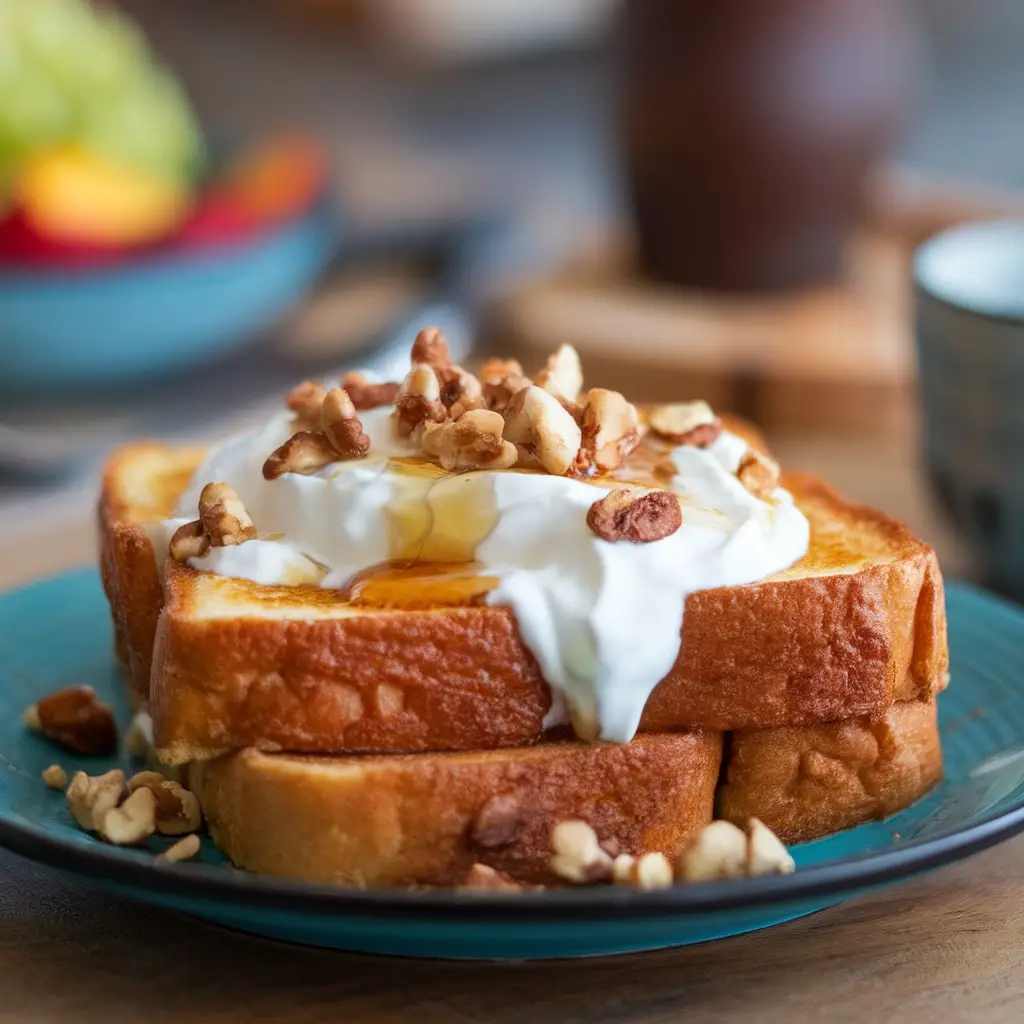
French Toast: Restaurant Quality At Home Guaranteed takes you through the steps to create delicious, fluffy French toast that rivals your favorite brunch spot—all from the comfort of your kitchen. With a few simple ingredients and easy techniques, you’ll impress family and friends with this beloved breakfast classic, making mornings a little brighter and a lot tastier.
Table of Contents
Classic with Maple Syrup
Classic French toast is a delightful breakfast that combines crispy edges with a soft, fluffy center. The rich flavor comes from a simple batter made of eggs, milk, and a hint of vanilla, making it both easy and satisfying to whip up at home. Topped with pure maple syrup and fresh berries, this dish brings a touch of warmth and comfort to your morning.
Making French toast is straightforward, perfect for a cozy weekend brunch or a special occasion breakfast. With just a few ingredients, you can achieve restaurant-quality results right in your kitchen. It’s all about achieving that golden-brown crust and ensuring each slice is perfectly soaked in the egg mixture.

Ingredients
- 4 slices of thick bread (like brioche or challah)
- 2 large eggs
- 1/2 cup milk
- 1 teaspoon vanilla extract
- 1/2 teaspoon ground cinnamon
- 1 tablespoon butter, for cooking
- Maple syrup, for serving
- Fresh berries (raspberries, blueberries, or blackberries) for garnish
Instructions
- In a bowl, whisk together eggs, milk, vanilla extract, and cinnamon until well combined.
- Heat a skillet over medium heat and add butter, allowing it to melt and coat the pan.
- Dip each slice of bread into the egg mixture, letting it soak for a couple of seconds on each side.
- Place the soaked bread in the skillet and cook until golden brown, about 3-4 minutes per side.
- Serve warm with maple syrup drizzled on top and a sprinkle of fresh berries for a burst of flavor.
French Toast with Greek Yogurt and Honey
This French toast recipe takes a classic breakfast favorite and adds a delicious twist with creamy Greek yogurt and a drizzle of honey. It’s rich, satisfying, and oh-so-simple to make, making it perfect for any morning.
Imagine crispy, golden slices of bread topped with velvety Greek yogurt and sweet honey, all enhanced with a sprinkle of nuts for added crunch. This dish is not only tasty but also a nutritious way to kickstart your day. Let’s jump into the details!

Ingredients
- 4 slices of thick bread (preferably brioche or challah)
- 2 large eggs
- 1/2 cup milk
- 1 teaspoon vanilla extract
- 1/2 teaspoon ground cinnamon
- 1 cup Greek yogurt
- 2 tablespoons honey
- 1/4 cup chopped nuts (walnuts or pecans)
- Butter or oil for frying
Instructions
- In a shallow bowl, whisk together eggs, milk, vanilla extract, and cinnamon until well combined.
- Heat a non-stick skillet over medium heat and add butter or oil.
- Dip each slice of bread in the egg mixture, allowing it to soak for a few seconds on each side.
- Place the soaked bread in the skillet and cook for about 3-4 minutes on each side until golden brown.
- Remove the French toast and top with Greek yogurt, drizzle with honey, and sprinkle with chopped nuts before serving.
Churro French Toast
Churro French Toast brings a delightful twist to a classic breakfast treat. This recipe combines the warm, comforting flavors of cinnamon and sugar with the fluffy goodness of French toast, creating a sweet and satisfying dish that will remind you of your favorite churros.
It’s surprisingly simple to make and perfect for any occasion, whether it’s a lazy weekend breakfast or a special brunch with friends. The crispy exterior, soft interior, and a sprinkle of powdered sugar make this dish not only delicious but also visually appealing. Serve it with a side of chocolate sauce for dipping, and you’ve got a restaurant-quality dish right at home!

Ingredients
- 4 slices of thick bread (like brioche or challah)
- 2 large eggs
- 1/2 cup milk
- 1 teaspoon vanilla extract
- 1 teaspoon ground cinnamon
- 1/4 cup granulated sugar
- 1/4 cup unsalted butter
- Powdered sugar for dusting
- Chocolate sauce for dipping (optional)
Instructions
- Prepare the Egg Mixture: In a bowl, whisk together eggs, milk, vanilla extract, and cinnamon until well combined.
- Coat the Bread: Dip each slice of bread into the egg mixture, ensuring both sides are coated. Let it soak for a few seconds for extra flavor.
- Cook the French Toast: In a large skillet, melt butter over medium heat. Add the coated bread slices to the skillet and cook until golden brown, about 3-4 minutes on each side.
- Make the Cinnamon Sugar: In a small bowl, mix together granulated sugar and remaining cinnamon. Once the French toast is cooked, sprinkle each piece generously with the cinnamon sugar.
- Serve: Dust with powdered sugar and serve with chocolate sauce on the side for dipping. Enjoy your delicious Churro French Toast!
Fun fact
The Neurogastronomy of French Toast: Why Your Brain Craves This Breakfast Classic
The Perfect Sensory Storm
French Toast creates what neuroscientists call a “sensory perfect storm” in your brain. Unlike most breakfast foods that focus on a single dominant texture or flavor profile, French Toast simultaneously activates multiple sensory pathways. The crisp, caramelized exterior formed through the Maillard reaction triggers pleasure receptors for crunch satisfaction, while the custard-like interior stimulates different tactile receptors that process creamy textures. This contrast—what food scientists term “dynamic textural opposition”—creates significantly more neural activity in the orbitofrontal cortex than uniform-textured foods, explaining why French Toast feels more satisfying than plain toast or simple pancakes.
Aroma-Driven Memory Encoding
The characteristic aroma of French Toast—particularly when cinnamon is incorporated—activates the olfactory bulb which has direct connections to the hippocampus and amygdala, brain regions responsible for memory and emotion. Research from Oxford University’s Crossmodal Research Laboratory has demonstrated that the specific combination of vanilla, egg, and caramelized bread aromas creates stronger episodic memory encoding than most other breakfast foods. This explains why French Toast often becomes associated with powerful childhood memories and why the smell alone can trigger nostalgic responses and anticipatory pleasure before the first bite.
The Evolutionary Advantage of French Toast
From an evolutionary neuroscience perspective, French Toast represents an optimal nutrient delivery system. The egg proteins combined with bread carbohydrates trigger simultaneous responses in the hypothalamus that signal both immediate energy availability (from simple sugars in syrup or fruits) and sustained satiety (from proteins and complex carbohydrates). This dual-action nutrient profile activates dopaminergic pathways in ways similar to how our ancestors would respond to finding rare, calorie-dense foods—essentially hijacking primitive reward systems that evolved during food scarcity.
Cross-Cultural Neural Response Patterns
Interestingly, brain imaging studies have shown that savory versions of French Toast (popular in India and parts of Southern Europe) and sweet versions (dominant in North America) activate almost identical pleasure pathways despite their dramatically different flavor profiles. This suggests that the fundamental textural and temperature characteristics of French Toast tap into cross-cultural neural substrates that transcend specific cultural taste preferences—one of the few breakfast foods to demonstrate this universal appeal pattern across diverse global populations.
This neurological perspective explains why French Toast has remained a beloved breakfast staple across centuries and continents—it’s not just delicious by chance, but because it perfectly aligns with how our brains are wired to experience and enjoy food.
If you want to discover more hidden culinary gems around the world, check out this page.

